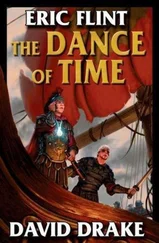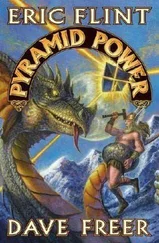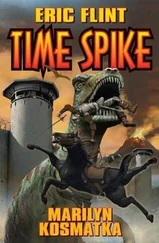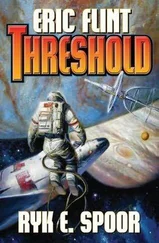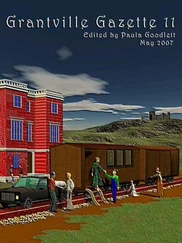Eric Flint - Slow Train to Arcturus
Здесь есть возможность читать онлайн «Eric Flint - Slow Train to Arcturus» весь текст электронной книги совершенно бесплатно (целиком полную версию без сокращений). В некоторых случаях можно слушать аудио, скачать через торрент в формате fb2 и присутствует краткое содержание. Жанр: Космическая фантастика, на английском языке. Описание произведения, (предисловие) а так же отзывы посетителей доступны на портале библиотеки ЛибКат.
- Название:Slow Train to Arcturus
- Автор:
- Жанр:
- Год:неизвестен
- ISBN:нет данных
- Рейтинг книги:5 / 5. Голосов: 1
-
Избранное:Добавить в избранное
- Отзывы:
-
Ваша оценка:
- 100
- 1
- 2
- 3
- 4
- 5
Slow Train to Arcturus: краткое содержание, описание и аннотация
Предлагаем к чтению аннотацию, описание, краткое содержание или предисловие (зависит от того, что написал сам автор книги «Slow Train to Arcturus»). Если вы не нашли необходимую информацию о книге — напишите в комментариях, мы постараемся отыскать её.
Slow Train to Arcturus — читать онлайн бесплатно полную книгу (весь текст) целиком
Ниже представлен текст книги, разбитый по страницам. Система сохранения места последней прочитанной страницы, позволяет с удобством читать онлайн бесплатно книгу «Slow Train to Arcturus», без необходимости каждый раз заново искать на чём Вы остановились. Поставьте закладку, и сможете в любой момент перейти на страницу, на которой закончили чтение.
Интервал:
Закладка:
Eric Flint
Slow Train to Arcturus
Dave Freer
1
One of the biggest faults with the concept of a one-shot slower-than-light colony mission was the proportion of the time spent accelerating and slowing down. Take Barnard's star, for example. At 5.9 light-years away, with a ship capable of 0.3 lights, a plausible speed for a ramscoop… you'd be there in 19.7 years, right?
Wrong. It all depends on acceleration. High-speed acceleration is expensive and creates engineering stresses, to say nothing of the stresses on the biological matter. A slow steady push is best. You accelerate slowly for at least a third of your trip. And then you have to slow down again. If you're going to visit a number of systems, this adds hugely to travel time. What's more, the momentum you've lost has to be built again.
Momentum is expensive. It is energy. Energy, whether taken from solar-pumped lasers or A-bombs is a consumable. Even if it is "free" solar power, it still costs to get it into a usable form, and once it has been used, it is gone. A metal space habitat has a finite lifespan-but it is an enormous one. The depreciating cost, amortized over its space-life, divided by its carrying capacity, makes it the cheapest vehicle humanity ever built.
However: Building the momentum needed to travel between the stars is too expensive to waste on one stop journeys, or even on leapfrogging between stars. Once the colony ship accelerates, it must never slow down again. Never. It will drop space habitat modules at each sun. But it must itself just keep cruising along, a slow train to the stars.
From: Slowtrain: The Stars Within Our Grasp,
Conquist, A., Mordaunt
Scientific Press, NY. 2090.
… More than any other space-used technique, the blowing of nickel-iron bubbles changed engineering. From ship hulls to habitats, it was the death of the 'plate-and-rivet' technology that had dominated since the nineteenth century. Bubbles blown from space-melted m-type asteroids altered nearly all the dynamics, both economically and in engineering terms.
From: An Introduction to Space Engineering,
Vol. 1. 2202, Braun, W.J. and Casern, D. (ed.)
SoCalTech Press (pub.)
In the Miran spacecraft now rapidly approaching the enormous alien starship, Kretz swam up from the drug induced trance-hibernation. He opened his eyes and looked at the cramped room, and up at Selna, the ship-physician, leaning over him.
"We're on the final intercept approach," said Selna, beaming down at him. From the transit-massage couch, Kretz smiled back, a little wary, a little confused.
That was to be expected. It would take his livers time to clear the drugs out of his system. Selna was much closer to sexual changeover than he was, and was therefore bigger and had more body, and more liver, available to deal with the trance-drugs. It was a reason to be wary with him. Moods were even less stable than sexuality, at this stage. Selna would only get worse until he became fully female, and settled down.
Well, thought Kretz, eventually he'd get there himself. It was odd to think of being sedentary and child-rearing. Selna had better watch his hormone supplements, though. There was no space on the intercept ship for a nesting territory, let alone a creche. Anyway, it would all smell wrong.
Kretz sat up. He was still giddy, but the excitement was beginning to push aside the drugs that had allowed them to make the six-year journey.
Selna lent him a hand, helping him to his feet. The physician-communications specialist's eyes were alive with excitement. "And have I got news for you, my xenobiologist-engineering friend! It looks like both of your specialties may just be needed."
Incredulously, Kretz turned on him. "There is something alive on the alien craft? It is not just a probe?"
Selna laughed. "To hear Leader Zawn, you'd think it will be full of aliens."
Kretz had to laugh too. "Probably fluffy and pink with tentacles."
"Well, he has detected beamed laser signals coming from one of the spheres. The sixth. I've started computer analysis of the signal."
"It's just an automated signal system. Look, when they started checking the back-record from Astronomy, they found signs of the alien ship as far back as two hundred years ago. It'll be a treasure trove, all right, but Zawn's archaeology will have more of a role to play than my xenobiology."
By this time they'd walked forward down the narrow passage to the science deck. Kretz was glad to flop into a chair. Leader Zawn was peering intently at some instruments, so absorbed that he didn't even look up. He just waved a hand in greeting. His mouth was stretched into a beam of pure delight.
Kretz stared at the forward viewscreens as Selna handed him a high-energy drink, designed to stimulate the mind, flush the body of trance-drug metabolites and, naturally, taste vile. The alien ship filled the entire viewscreen, although they must be at least seven light-seconds away from it. It looked even more like a string of white beads-beads moving at nearly a third of the speed of light, but beads none-the-less. Of course there was not much light out here to reflect, but the infrared view confirmed that the thing was, by comparison to space, quite warm. The machinery inside must still function, somehow. No matter how well you insulated anything it would-eventually-leak heat.
"Behind the ramscoop is a fusion plant," said Zawn, looking up from his instruments and not bothering with niceties like asking how his xenobiologist felt after trance-sleep. The answer was always the same anyway: awful.
"And behind that the spectroscope confirms the next object is water-ice. Probably a whole comet. Now what do you think they'd want that for, Kretz?"
Kretz hid his smile. "Fuel?" he said just for the sheer joy of watching Zawn's face. The poor fellow almost showed his teeth before realizing that he was being teased.
"Someone will kill you in a mating fight, Kretz. Don't be more obstructive than you have to be. Replenishment, that's what. Replenishment of lost materials. There will be some leakage, but this gives the lie to Melka's ideas. Of course there could still be life, even if his calculation of the effectiveness of seals is correct. They just brought replenishments along. A lot of replenishments. The third object is nitrogen ice and carbon dioxide."
"Well, they're transporting water, nitrogen and CO 2 along does suggest that they're not the sort of alien life-forms Melka and Ferni proposed," said Kretz. Zawn had a habit of leaping to conclusions. Archeologists had to, he supposed. Often there wasn't that much to go on. But the combination was indeed promising for life as they knew it on Miran. Perhaps the theories of what the basic conditions for the formation of life were, were about to be proved. The theories of evolutionary convergence were another matter entirely. Yes, they worked within a planetary sphere, but out here…
Why should two legs and two eyes be a norm? He already knew the answer: because function shapes form. But even if there was a remnant of life on the alien ship, it was going to be very different. Excitingly different, beyond his wildest dreams.
Zawn leaned in, beamed, and came up with his clincher. "And it is very plain that they're using energy. Quite a lot of energy for a ship full of machinery or even sleepers. Each of those beads is rotating. There are small ion-jets on the equatorial ridge of each bead to keep them spinning."
Spin. Centrifugal force would provide the effect of gravity. And why should gravity matter to machinery, or, as had been postulated by the excitable fringe media on Miran, to a spacecraft full of frozen aliens?
There might be a huge cargo of trance-state aliens on that ship. .. but if so, where were they heading for? The ship showed no signs of slowing. The initial theory had been that the vessel's purpose was to deploy probes, and that that had caused the flash that had originally caught astronomers' attention. Objects moving at considerably higher fractions of C had been detected relatively soon after that.
Читать дальшеИнтервал:
Закладка:
Похожие книги на «Slow Train to Arcturus»
Представляем Вашему вниманию похожие книги на «Slow Train to Arcturus» списком для выбора. Мы отобрали схожую по названию и смыслу литературу в надежде предоставить читателям больше вариантов отыскать новые, интересные, ещё непрочитанные произведения.
Обсуждение, отзывы о книге «Slow Train to Arcturus» и просто собственные мнения читателей. Оставьте ваши комментарии, напишите, что Вы думаете о произведении, его смысле или главных героях. Укажите что конкретно понравилось, а что нет, и почему Вы так считаете.



